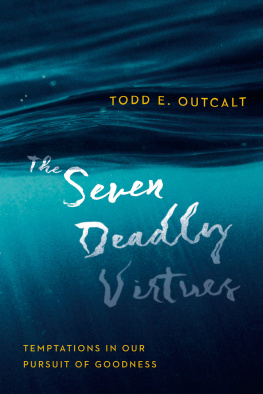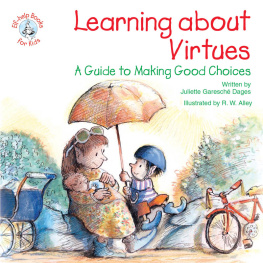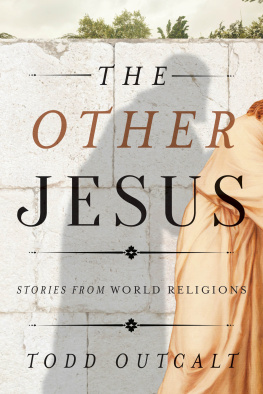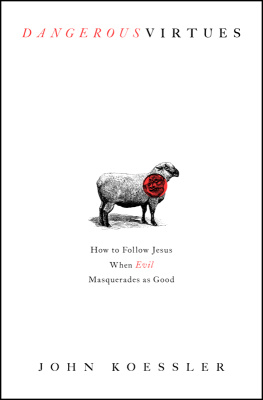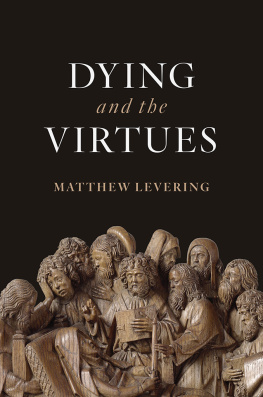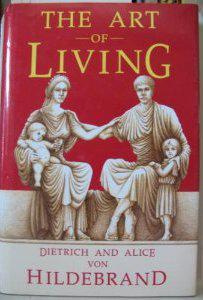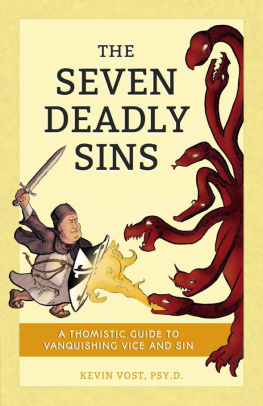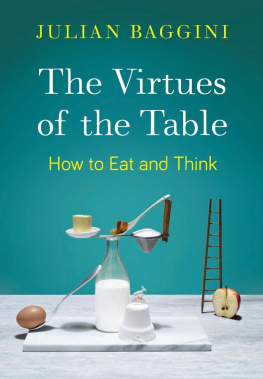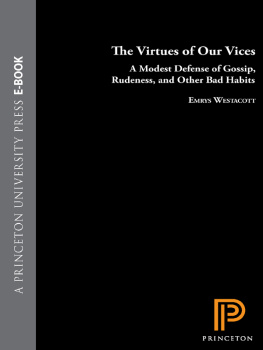
TEMPTATIONS IN OUR
PURSUIT OF GOODNESS
TODD E. OUTCALT
InterVarsity Press
P.O. Box 1400, Downers Grove, IL 60515-1426
ivpress.com
2017 by Todd E. Outcalt
All rights reserved. No part of this book may be reproduced in any form without written permission from InterVarsity Press.
InterVarsity Pressis the book-publishing division of InterVarsity Christian Fellowship/USA, a movement of students and faculty active on campus at hundreds of universities, colleges, and schools of nursing in the United States of America, and a member movement of the International Fellowship of Evangelical Students. For information about local and regional activities, visit intervarsity.org.
Scripture quotations, unless otherwise noted, are from the New Revised Standard Version of the Bible, copyright 1989 by the Division of Christian Education of the National Council of the Churches of Christ in the USA. Used by permission. All rights reserved.
While any stories in this book are true, some names and identifying information may have been changed to protect the privacy of individuals.
Cover design: Faceout Studio
Interior design: Dan van Loon
ISBN 978-0-8308-8100-0 (digital)
ISBN 978-0-8308-4476-0 (print)
This digital document has been produced by Nord Compo.
To Paula
Two rabbis were debating virtues. One rabbi asked, And what is a virtue? The other answered, A virtue is timeless and unchanging. But the first rabbi said, I must tell you story.
There was a beautiful bird that lived its entire life inside a luxurious cage. One day another bird flew into the cage when the master of the house had inadvertently left the cage door open. The second bird said to the first, Why dont you fly away with me to freedom?
But the beautiful bird answered, I know nothing of the freedom of which you speak. Each day I receive meals from my masters hand. My domicile is cleaned. I am secure and happy. Life is good. And whenever I see my reflection in the mirror, I sing.
But you are a prisoner, said the second bird.
I think not, said the beautiful bird. How can one be a prisoner while enjoying all of this?
At that word the second bird flew away to freedom while the beautiful bird remained happy and singing in its cage, unsuspecting of its true condition.
BASED ON A JEWISH PARABLE
Two looked out from the prison bars,
One saw mud, the other stars.
TRADITIONAL SAYING
Be careful not to practice your righteousness in front of others to be seen by them.
MATTHEW 6:1 NIV
INTRODUCTION
Where virtue is, there are many snares.
ST. JOHN CHRYSOSTOM
Choose your enemies carefully...
for you will become like them.
ANCIENT PROVERB
IN CLASSIC CHRISTIAN THEOLOGY THE CHURCH has long taught and preached against the seven deadly sins, which are traditionally defined as wrath, greed, sloth, pride, lust, envy, and gluttony. Theologians have addressed these sins from many angles, whole books have been written about them, and most pastors have addressed them at one time or another. In fact, these sins are so prominent, so well pronounced, that it is difficult to miss them. These sins can eat away at our relationships, our work, our homes, and our interior (or spiritual) lives.
But these same truths also hold up when we examine our virtues, which may be described for our purposes here as those values and loves that we cherish dearly and that we often believe are shaping our faith and our futures.
As St. John Chrysostom once noted centuries ago, our virtues are as problematic as our sins. Its just that our virtues are far more cleverly disguised and have a tendency to embolden us with the sin of pride, which is difficult to identify in the life of faith. The Christian faith has always contained these tensions. While virtues are often regarded as the goal of faith (to be better people, to be holy) these virtues can also erode our faith in God if we are not careful. Our virtues can become our pride and joythose great achievements we have obtained, those accomplishments that set us apart from sinful masses who have not yet ascended to the pinnacle of faith. We can even cherish these virtues over God (which is idolatry). Often, our virtues are what land us in trouble. Our virtues can even be in opposition to the gospel.
No doubt some will be troubled by this assertion. (We often want to protect our virtues and hold them up to the light as truth.) Others may dismiss the idea of deadly virtues.
Regardless, I hope readers of good faith will at least undertake this adventure of exploring Christianity from the vantage point of virtues rather than sins. Instead of observing the Christian life from the underside, we may find equally troubling difficulties from the topside. We may also discover that the Christian faith, as often presented and cherished, has the potential to hide a multitude of deadly virtues. We may discover that some of our most cherished assumptions about faith are being destroyed by our virtues rather than our sins.
Parables of Virtue
Most of the time, when the parables of Jesus are discussed or parsed, the takeaway is that the parables address certain sins or those debased attitudes that Jesus wanted to address.
For example, the parable of the sower (Lk 8:4-15) is often regarded as a parable about various levels of faithwith the good soil representing, of course, people of strong faith and character. But within the context and the audience who were first listening to this parable, we can see an entirely different outcome. In the explanation that Jesus provides (vv. 11-15) we can see that the types of soils do not represent those who dont believe but those who claim they do. Misplaced faith, myopic faith, lip-service faiththat is what the parable is about. The parable essentially asks a question: Do we regard faith as something we possess, or does faith possess us? The differences are noteworthy. It is the difference between faith as a noun and faith as a verb, between regarding faith as a possession and regarding faith as an action that produces fruitfulness and endurance (v. 15).
The parable of the laborers (Mt 20:1-16) is another story commonly misconstrued. Jesus told this parable to demonstrate that the last will be first, and the first will be last. In other words, we must always be on the lookout for our virtuessuch as valuing our faithfulness, perseverance, and unchanging beliefs over Gods grace and hospitality. These were the attitudes that the early laborers of the parable possessed; they could not accept Gods generosity and equal reward for the latecomers. How often do we see these very attitudes at play in congregations where new people have no voice or where longtime members regard their history and understanding as superior to that of the young? This is a parable about misplaced attitudes of the faithful.
Likewise, the parable of the prodigal son (Lk 15:11-32) is most frequently used as a springboard to talk about salvation or to illustrate how people can squander their lives through their own desires and devices. Often the parable is regarded as a salvation story, with the wayward young man being welcomed home (to heaven) by the loving Father. But we can miss the attitude of the older son, which is what the parable is really about. Within the context and the audience that Jesus was speaking to, this parable is principally designed to speak to the misplaced virtues of goodness, holiness, and faithfulness that the religious leaders of Jesus day believed they possessed, virtues that made them better than the lowly prodigals. But this is a grace parable, and the story invites the faithful to see themselves as the older son, who cannot accept the generosity of almighty God. It is not a parable of virtue but a parable of change.

